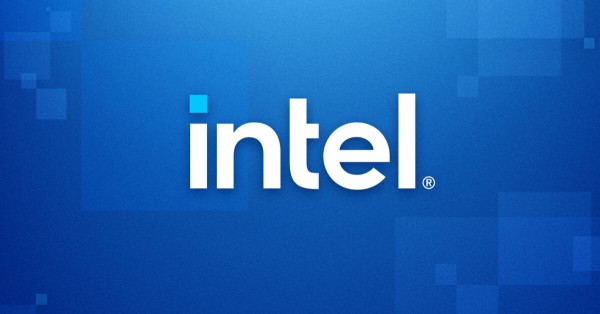Purdue University Airport, together with Ericsson and Saab, unveiled a groundbreaking 5G network designed to serve as a “lab to life” platform. This platform will enable academics, researchers, and businesses to create scalable commercial solutions aimed at enhancing operations and security for airports of varying sizes. The project’s objective is to demonstrate the potential of private 5G networks in airport settings, where high-performance networks can undergo testing in real-world situations.
Traditionally, airports have relied on hardwired network connections through sensors and systems, often necessitating physical connection points via trenches for copper lines or fiber-optic cables. Other options include unreliable point-to-point radio frequency links or public cellular connections with subscription fees and performance limitations tailored to consumers. The Purdue Airport collaboration with Ericsson and Saab renders these methods outdated, offering airports greater flexibility in adding or relocating products during construction phases, saving both time and resources for operators and passengers.
As a leading global provider of information and communication technology, Ericsson will supply a private 5G network for the Purdue Research Foundation to operate at Purdue University Airport (LAF). LAF, Purdue University’s public-use airport located in the southwest section of the West Lafayette campus, handles over 125,000 aircraft operations annually, ranking it as Indiana’s second-busiest airport.
Saab will contribute to the project by implementing Aerobahn™, a platform that enhances airport efficiency for airlines and ramp management, installing SAFE Event Management platforms for airport operation center security, and deploying ADS-B sensors for aircraft tracking. These investments aim to bolster landside operational safety and efficiency while enhancing airside security.
Purdue will offer its airport and the “lab to life” testbed established throughout the Discovery Park District at Purdue, a 400-acre mixed-use development located adjacent to the university’s campus.
Purdue President Mung Chiang highlighted Purdue University as an ideal location for this innovative airport management project, citing longstanding partnerships with Ericsson and Saab—two Swedish global tech leaders. The Purdue University Airport is one of the few operated at a research university in the U.S., and the adjacent Discovery Park District provides an ecosystem for deploying cutting-edge technologies before they’re introduced elsewhere in the country. Chiang emphasized that no other location is better suited for the 5G innovations and network management solutions that will impact lives globally.
Troy Hege, Vice President of Innovation and Technology for Purdue Research Foundation, which manages Discovery Park District at Purdue, remarked that extending the “lab to life” platform to the Purdue Airport opens doors for advancing aviation and mobility innovation and education in collaboration with industry, faculty, and students. The fusion of Purdue’s operational airport, research faculty, and students with Ericsson’s Private 5G network and Saab’s sensor arrays and operating systems creates an unparalleled innovation and education resource.
Ericsson Private 5G is a dual-mode core private network for both 4G and 5G, designed to facilitate digital transformation across various industries and enterprises. This high-performance, user-friendly cellular connectivity solution is specifically developed to power Industry 4.0 innovations.
George Mulhern, Head of Ericsson Enterprise Wireless Solutions, commented on the growing global demand for digitalization at airports, which necessitates reliable, secure, and high-performing wireless networking. Ericsson’s Private 5G network will provide cellular connectivity for the “lab to life” innovation platform at Purdue University Airport. This unique partnership allows for the testing and industrialization of 5G applications and use cases addressing aviation market needs, such as improved flight safety, enhanced passenger experiences, and increased efficiency and cost savings. Mulhern noted that this project is another example of how various enterprises can utilize 5G networks to develop solutions in real-world settings.
Purdue Airport Manager Adam Baxmeyer views the private 5G installation as an excellent alignment with the airport’s vision. Baxmeyer highlighted Purdue Airport’s significance as a key location in Indiana, serving commercial and industrial clients for over 90 years. The airport’s mission also encompasses supporting Purdue students, faculty, and staff in refining their skills, conducting research, and advancing aviation and transportation technology. Baxmeyer believes the collaboration aligns naturally with Purdue Airport’s goals, as it allows them to study and better comprehend the technologies that will shape future airports.
Saab will be the inaugural industry partner to utilize this dedicated 5G network. As a global defense and security company, Saab opened a cutting-edge manufacturing facility in Discovery Park District at Purdue in 2021. This state-of-the-art facility is dedicated to producing the T-7A Red Hawk, which will train future generations of U.S. Air Force fighter and bomber pilots for years to come.
Erik Smith, President and CEO of Saab in the U.S., emphasized that the platform aims to demonstrate the compatibility of advanced airport systems with 5G technology. By integrating airside and landside operations to enhance airport efficiency and planning, the platform at Purdue will contribute to this ongoing progress. Smith described the joint investment with Ericsson at Purdue as a win-win for Indiana, expressing pride in Saab’s participation in the innovative 5G project and their extensive history of excellence in air traffic control for delivering a scalable solution.
David Rosenberg, Indiana Economic Development Corp. Chief Operating Officer and Chief of Staff, commended the visionary leadership of Ericsson, Saab, and Purdue in establishing this partnership. Rosenberg noted that this high-impact project involving two global industry leaders and a world-renowned research university based in Indiana aligns with the state’s goal of prioritizing 5G development. He expressed satisfaction in witnessing the collaboration and its commercial outcomes alongside other 5G projects in Indiana.






























